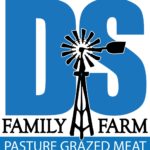Worried about what you are "really" eating? Have peace of mind with pasture grazed meats.
Managing Soil Carbon
In a previous post we discussed soil organic matter and the storage of carbon in soil. The key point, plants in association with soil biology create a super highway moving carbon from the atmosphere into soil. This super highway is known as the liquid carbon pathway.
- Plants convert sunlight into liquid carbon energy
- Plants dump over half of this carbon energy into the soil
- Soil biology feeding on this carbon provides:
- Water, nutrients, and an overall improved soil environment to plant roots… a symbiotic relationship.
The happening place
Plant roots is where it happens. When it comes to “what’s happening” in the soil, the place to be is in that magical zone near plant roots called the rhizosphere. Bacteria increase by 2400% and fungi increase 1200% in the area right around plant roots when compared to the rest of soil. Soil creatures hang out in the rhizosphere for what they see as a “free lunch” (carbon).

With large concentrations of bacteria and fungi around plant roots, it doesn’t take much imagination to realize that all kinds of creatures will soon follow. Bacteria and fungi are lunch for the rest of the soil food web.

Though we can’t see much of this vast community with the naked eye, we know it is based on carbon just like all food webs on earth. The potential to sink carbon into the soil is significant when the soil food web is healthy.
So how can we manage what we cannot see?
It’s actually very simple, manage what you can see! The above ground portion of plants are a mirror to their underground roots. We can literally manage the rhizosphere by managing what we see above ground. When it comes to soil health the basic principles (that apply everywhere) are:
- Keep the soil covered
- A living root year around
- Plant species diversity
- Minimize man induced soil disturbance (chemical/physical)
These principles were taken from nature. If soil becomes barren in nature, plants arrive to start the healing process (think of those pesky weeds growing in the crack of a sidewalk). Plants form a cover and attract below ground critters with liquid carbon from their roots. They also attract critters above the ground with carbon in the form of vegetation and flowers. It is really all driven by biology. HOW you manage above ground biology will determine below ground biology and how much carbon ends up in the soil.
Here at DS Family Farm we mimic natures pattern to manage soil carbon with the cattle herd. We manage the below ground food web by applying the soil health principles above ground.
As you look at the photo below, we can literally see insects, mice, coyotes and cattle swimming through the above ground vegetation. Now translate this to what is going on below ground. It is not hard to imagine herds of bacteria, protozoa, nematodes and earthworms swimming around below ground roots.

Join us in the regenerative ag carbon cycle
With current elevated levels of carbon in the atmosphere, now is a great time to be a carbon farmer. We are using free sunlight energy and moving carbon from the atmosphere into plants. The plants are moving the carbon into critters above and below ground. Our customers are enjoying this carbon in the form of Pasture Grazed Beef.
Please join us and other regenerative agriculture practitioners in being an active, positive force in the carbon cycle. Your taste buds and your health will be glad you did.
For a more in depth discussion on this topic refer to ATTRA Sustainable Agriculture “Nutrient Cycling in Pastures” (24 page PDF).




